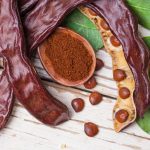The Carob
The carob is one of the least known food products in Malta’s culinary history. The reason for this relative shortage is mainly attributed to two reasons.
In his 1811 Saggio di Agricoltura per le Isole di Malta, Padre Carlo Giacinto explained how the carob was primarily considered as animal fodder. In other words, the consumption of this product by humans was often loaded with a sense of aberration.
Secondly, fragments of evidence from the archives often align carob consumption with difficult periods. Contractual obligations from the eighteenth century indicate the importation of the product at a time which correlates with periods of hunger. The same patterns could be found in the following centuries.
The carob always had stiff competition against the taste generated by other sweetening agents, mainly honey and sugar. However, popular lore believed in the medicinal qualities of carob syrup. Ġulepp tal-Ħarrub, according to the Maltese, could be used as a soothing agent for a sore throat. It is also served with desserts and sometimes consumed as a hot beverage.






